Every NHL offseason is a chance for front office personnel around the league to bolster their club’s on-ice roster in an effort to improve their Stanley Cup chances in the upcoming campaign. This particular offseason included blockbuster trades (some occurring during the Stanley Cup Final), several teams drafting a new No. 1 prospect for their pipeline, and a particularly frenetic free-agency period that included more than 100 players signing and $1 billion spent on July 1 alone.
Some teams aced the offseason test. Other teams … did not.
Here are the report cards for all 32 NHL teams through the first wave of signings and trades, based on the moves they made, the moves they wanted to make and their needs entering the rest of the summer.
Note: Advanced statistics are from Natural Stat Trick and Evolving Hockey. Cap and contract information is from PuckPedia; teams with negative remaining cap space are that much over the cap, and must be cap-compliant by opening night. Kristen Shilton covered the Atlantic and Metro teams, while Ryan S. Clark handled the Central and Pacific clubs.
Coach status: Patience is one trait that can play a role in defining a rebuild. Luke Richardson has been a patient figure in his two seasons in charge of a young Blackhawks roster. Although the Blackhawks remain in a rebuild, they’re approaching what appears to be the next stage in that plan.
Homegrown talents such as Connor Bedard, Kevin Korchinski, Philipp Kurashev and Alex Vlasic have grown under Richardson. And they’ve now used the last two free agency cycles to recruit veterans that have added another layer to a rebuild that appears it could be on the verge of finishing with more than 30 wins and 70 points after having consecutive 20-win campaigns with less than 60 points.
Overall grade: A. GM Kyle Davidson supplemented the young core with veterans such as Nick Foligno and Taylor Hall last offseason. A year later, Davidson was adept in using copious cap space to add even more veterans, while addressing their weaknesses.
Bertuzzi and Teravainen provide more top-six options for a team that finished last in goals per game. Brodie, Brossoit and Martinez, the latter two of whom won a Stanley Cup together, offer more defensive reliability for a roster that allowed the fourth-most goals per game. Lastly, Maroon and Smith can provide help in a number of areas as well.
Coach status: Moving on from David Quinn after two years meant the Sharks were searching for a coach who could help build the foundation for their new era. They hired Ryan Warsofsky, who has won at the ECHL and AHL levels. He’ll be in charge of a young roster that seeking to improve upon the worst record in the NHL last season, aided by the rookie campaigns for Celebrini and Smith.
Overall grade: A. Here’s why the Sharks had one of the strongest offseasons of any NHL team. They drafted a top-line center in Celebrini while signing a second-line center in Smith, the latter of whom could end up on the wing in the future. They added players who can help them now and in the future, including some who could be traded at the deadline to add to the draft capital coffers.
Perhaps the only issue with the Sharks’ plan is that they have all three salary retention slots taken, which could make deals at the deadline a bit more challenging to execute. But this team should certainly be more competitive next season.
Coach status: Spencer Carbery enters his sophomore season in Washington (and as an NHL head coach) on the heels of a successful rookie campaign that earned league-wide attention. The NHL’s youngest bench boss grabbed multiple first-place votes for the Jack Adams Award after helping Washington make an unexpected appearance in the postseason despite a rocky start.
Carbery’s good nature and relentless energy have been touted as his best assets, and Washington’s players have begun to excel in Carbery’s system. There should be even brighter days ahead for the Capitals under Carbery’s continued reign.
Overall grade: A. Washington came to play this offseason. It started with a mid-June blockbuster trade for Dubois that not only allowed the Capitals to fortify their top six with a young talent, but also dump Kuemper’s contract now that Charlie Lindgren has emerged as the team’s No. 1 goaltender.
GM Brian MacLellan revamped Washington’s blue line with a sure thing in the underrated Roy and a wild card (with potentially high upside) in Chychrun. He didn’t fit with the Senators, but at just 26 years old, Chychrun still has a high offensive upside to add from the back end, contrasting from the defense-first Roy will provide. MacLellan also added Thompson via trade, and he comes with Stanley Cup experience.
Where we once thought perhaps the Capitals were headed for a full-blown rebuild, it’s clear now they’re not wasting the final years of Alex Ovechkin‘s career. Washington is determined to stay in the playoff picture.
Coach status: Paul Maurice has few job concerns with Florida coming off its first-ever Stanley Cup championship. His arrival with the Panthers triggered the special run they’ve been on over the past two seasons, and Maurice has repeatedly earned the praise of his players for the way he’s cultivated a winning culture. That’s the ultimate endorsement.
Overall grade: A-. The Panthers took care of their own business (for the most part) and filled in around the edges with strategic depth signings. GM Bill Zito’s best work was getting last year’s 57-goal scorer Sam Reinhart inked to a seven-year, $69 million contract that is the definition of team-friendly. And Zito secured rising star Anton Lundell on a six-year, $30 million extension as well. That’s two prominent pieces of Florida’s core wrapped up, to go along with the long-term deals already done for Gustav Forsling, Aleksander Barkov, Matthew Tkachuk and others.
Zito couldn’t keep the entire band together though, letting both Montour and Ekman-Larsson walk away in free agency, which will impact Florida’s back end next season. Still, Dmitry Kulikov‘s extension brings some peace of mind. Overall, Zito prioritized the Panthers’ needs and allocated resources accordingly.
Coach status: Although Andrew Brunette was previously in charge of the Panthers, that was as an interim coach. Last season was Brunette’s first as an NHL head coach, and it led to him going from trying to find a way to get his principles across to getting the Preds back into the playoffs.
And for his next act? Brunette will have even more attention with the Predators spending big to sign Marchessault, Skjei and Stamkos.
Overall grade: A-. Following a somewhat surprising appearance in the playoffs last season, the Preds’ offseason puts the rest of the Western Conference on notice that they have serious aims to join the ranks of the top Stanley Cup contenders.
Trading Ryan McDonagh back to the Lightning essentially freed up the cap space for them to sign Stamkos, along with Marchessault and Skjei. They signed Juuse Saros to an eight-year extension, which means they can either keep prospect netminder Yaroslav Askarov for the future, or trade him to attain what could be a hefty bounty. But with eight players older than 30, plus the fact Filip Forsberg and Saros are 29? It’s clear that the Predators are in a window to win now.
Coach status: Sheldon Keefe wasn’t out of work for long, going from fired in Toronto to hired in New Jersey over a matter of days. GM Tom Fitzgerald obviously knew who he wanted to step in as a permanent replacement for Lindy Ruff (let go last March and replaced temporarily by Travis Green).
Keefe has worked with a talented core similar to the Devils’ before, and said when New Jersey hired him that he wants to allow those high-end skill players to exploit their abilities to create offensive opportunities. If Keefe’s philosophy lands with Jack Hughes & Co., it could be a coaching match made in heaven.
Overall grade: A-. New Jersey had some big needs this offseason, and Fitzgerald met them. The Devils’ major issue was goaltending, and Fitzgerald traded for one of the top available options in Markstrom, giving New Jersey a veteran netminder who should finally shore up that position. The blue-line boost from Dillon and Pesce projects to be significant as well. And Dillon especially is part of the overall influx of bigger bodies that New Jersey has lacked in recent years (to their own detriment).
Fitzgerald wanted more physicality for the Devils and Dillon (6-foot-4) and Noesen (6-foot-1) will add size along with skill for New Jersey. Noesen can also grab a solid role in the Devils’ bottom six to give them offensive depth that dwindled down the stretch last season. All-in-all, Fitzgerald has set the Devils up well to push for a playoff spot again.
Coach status: What else really needs to be said about Kris Knoblauch at this point? All the man did was take a team with a 2-9-1 start and turn them into a full-on juggernaut that had the best record in the NHL team from the time he was hired. From there, he guided the Oilers to their first Stanley Cup Final in the Leon Draisaitl–Connor McDavid era, and nearly won the whole thing by forcing a Game 7 after opening with a 3-0 series hole.
What Knoblauch did in Year 1 has only set the stage for the fact the Oilers could possibly win it all in his second season.
Overall grade: B+. Everyone has that friend — or is that friend — who goes on a shopping spree only to be left with one question: Who’s paying for all of this?
The Oilers have the money, but they don’t have the cap space. Between the new players they signed and the ones they brought back, they appear to have a roster that can provide consistent secondary scoring while keeping the elements that made them a Cup Finalist in the first place. But their cap situation means that they will have to move on from at least one player in an attempt to clear space, while also signing RFAs Philip Broberg and Dylan Holloway to new deals.
Coach status: Drew Bannister was an in-season replacement who is entering his first full season. The Blues won 30 of their 55 games under Bannister, who was hired Dec. 12 after the club dismissed Craig Berube.
In that time, the Blues had the 13th-best record in the NHL, and allowed the 12th-fewest goals per game from when Bannister was hired. Retaining that defensive consistency while improving on an attack that was 23rd in goals per game in Bannister’s tenure could help the Blues challenge for a playoff spot, as they were six points out of the final wild-card position last season.
Overall grade: B+. Conservative as it may have been, there was an element of subtlety with how they approached the offseason. The three forwards the Blues signed combined to score 32 goals last season. All three of them provide another profile trait in that they’re two-way players who logged more than 100 short-handed minutes last season, a detail that plays into the Blues’ plans of becoming better defensively.
Another important move was inking Pavel Buchnevich to a six-year extension worth $8 million annually. The Blues have enough cap space left to continue to add around the edges, or save it for in-season trades.
Coach status: Jon Cooper has spent more than a decade leading Tampa Bay to some of the franchise’s greatest moments. He’s arguably the most secure coach in the league, and possibly in pro sports.
Overall grade: B+. Credit to GM Julien BriseBois — the man is not afraid to make waves. And BriseBois did that when he let Stamkos walk in free agency while simultaneously signing Guentzel to a seven-year deal. It was a perhaps inevitable end of an era for the Lightning with their long-time captain, but still made for a bitter pill to swallow.
Stamkos wasn’t the only significant piece out the door either, as BriseBois flipped Sergachev to Utah and Jeannot to L.A. (those moves generated cap space for Guentzel and the Victor Hedman extension). It was another signal of how Tampa Bay is committed to continue winning in whatever way possible — and BriseBois was clearly fearless in the pursuit of players he believed will keep the Lightning in that contender mix. BriseBois will undoubtedly be judged on what sort of factor Guentzel is in making that happen.
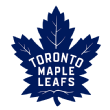
Key players added: D Chris Tanev, D Oliver Ekman-Larsson, G Anthony Stolarz
Key players lost: F Tyler Bertuzzi, D TJ Brodie, G Ilya Samsonov
Remaining cap space: $180,000
Coach status: Craig Berube is back for his third go-round as a head coach to replace the fired Sheldon Keefe in Toronto. The Leafs were looking for a new voice and that’s what they’ll have in the old-school Berube.
His philosophy is a north-south style of play that prioritizes defense first, and physicality from everyone on the ice. When Keefe was in charge, the Leafs tended towards being too loose in their details while leaning into their offensive skill sets. Berube will need to strike a balance for the Leafs that allows the team’s talented core to shine up front, without sacrificing the overall team game.
Overall grade: B+. GM Brad Treliving was true to his end-of-season word about Toronto’s planned push to improve defensively. Treliving proactively traded for the signing rights to Tanev — arguably the best free agent defenseman available — and got a deal over the line (something Treliving didn’t do at the March trade deadline). And Treliving got Ekman-Larsson in too, although on a perhaps-too-long four-year deal.
The Leafs did work internally extending defenseman Timothy Liljegren and Joseph Woll, who was essentially anointed the team’s No. 1 goaltender. That’s a massive role for Woll to take on, and he’ll be backed up by veterans Stolarz and Matt Murray (signed to a team-friendly extension) in the process.
Toronto putting its faith in Woll — and not spying an experienced starter via trade or free agency — will be a definite focal point when the Leafs’ next season gets underway.

Key players added: D Ian Cole, F Liam O’Brien, D John Marino, D Mikhail Sergachev, F Kevin Stenlund
Key players lost: D Travis Dermott
Remaining cap space: $12.57 million
Coach status: There’s always one coach whose efforts lead to questions about what more they could achieve if their organization had the resources. Andre Tourigny has been that coach, and now he’s one who appears to have more resources than ever before.
What he did in his three seasons in charge of the Arizona Coyotes drew attention because he was finding ways to keep his young team competitive despite operating within an organization that never spent anywhere close to the cap. So what could he accomplish with a core that’s one year older and now has the infrastructure in place? We’re about to find out.
Overall grade: B+. The Sergachev trade said quite a bit about the current state of the Utah Hockey Club. It showed that Utah GM Bill Armstrong had the cap space to facilitate a deal. He used that space to go after a 26-year-old defenseman who can be trusted to play in every scenario. Plus, with Sergachev entering the second season of an eight-year deal, it’s a trade that gives the Hockey Club back-end stability for quite a while as the young NHLers and prospects mature.
But there was so much more to UHC’s offseason than Sergachev. Utah traded for Marino, signed Cole in free agency and signed Sean Durzi to a long-term contract. All while having the extra cap space to facilitate another trade or signing if they feel it’s warranted ahead of — and during — their first season in Salt Lake City.

Key players added: F Max Jones, F Elias Lindholm, D Nikita Zadorov, G Joonas Korpisalo
Key players lost: F Jake DeBrusk, F Jesper Boqvist, F Danton Heinen, D Matt Grzelcyk, G Linus Ullmark
Remaining cap space: $8.64 million
Coach status: Jim Montgomery has been good for Boston. In two seasons, he’s guided the Bruins to one Presidents’ Trophy-winning regular season and two consecutive playoff appearances. There may be trouble in paradise brewing after Montgomery’s critical comments following Boston’s postseason exit about how the team can’t be expected “to win every game 2-1,” to which GM Don Sweeney responded that if the Stanley Cup Final could end in Game 7 with a 2-1 score, then, “you can win 2-1 in those situations, and you probably have to more often than not.” Challenge issued!
Overall grade: B. Boston improved with the additions of Lindholm and Zadorov. That’s a bona fide top-six center and top-four defenseman to immediately make the Bruins a better team — if they can translate those high-end skill sets into a new system.
Lindholm’s regular-season totals have diminished in each of the last two seasons but he was excellent in the postseason for Vancouver. Zadorov’s physicality and imposing frame should fit right in with Boston’s M.O. — but the six-year contract? That may come back to haunt the Bruins.
While Boston brought in new players, a couple key pieces — specifically DeBrusk and Ullmark — went out of the door. And Sweeney has yet to sign RFA Jeremy Swayman to a long-term deal that would solidify Boston’s crease moving forward. Until that happens the Bruins’ are an incomplete picture of what they should (ideally) be by September.
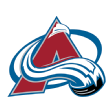
Key players added: D Erik Brannstrom, D Calvin de Haan, F Parker Kelly, D Jacob MacDonald
Key players lost: F Andrew Cogliano, F Brandon Duhaime, D Jack Johnson, D Caleb Jones, F Zach Parise, F Yakov Trenin, D Sean Walker
Remaining cap space: -$1.34 million
Coach status: Only Cooper and Mike Sullivan have been behind an NHL bench longer than Jared Bednar. His time in charge of the Avalanche has seen them go from cellar dwellers to upstart to Stanley Cup champion to a team trying to win at least one more title with their current core. Bednar has established himself as one of the NHL’s best and most respected coaches, and has earned the trust of an organization that has gained stability under his watch.
Overall grade: B. Their entire free agent class cost them $8.175 million in cap space because they didn’t really have a choice. Like many teams challenging for a Stanley Cup, the Avalanche have significant financial decisions awaiting them. At some point, they’ll have an idea of what can be done with captain Gabriel Landeskog and his $7 million cap hit. The same goes for what they must do whenever Valeri Nichushkin returns from suspension in November and with it, his $6.125 million hit.
It’s possible that GM Chris MacFarland could have to move money in order to get cap-compliant ahead of a season that sees All-Star winger Mikko Rantanen enter into the final campaign of his deal.
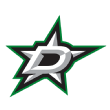
Key players added: D Matt Dumba, G Casey DeSmith, D Ilya Lyubushkin
Key players lost: F Radek Faksa, D Jani Hakanpaa, F Joe Pavelski, F Craig Smith, F Sam Steel, D Ryan Suter, D Chris Tanev, G Scott Wedgewood
Remaining cap space: $7.14 million
Coach status: Pete DeBoer is doing what Pete DeBoer does. That’s winning a high amount of regular-season games that allows them to be one of, if not, the top seed in a conference. His teams also win playoff series, and in the case of the Stars, they’re winning them despite falling behind. The Stars have lost seven consecutive Game 1s, a streak that started before they hired DeBoer. But if a series reaches a Game 7? DeBoer-coached teams always win.
This has led to him leading the Stars to two straight Western Conference finals appearances, with the expectation that a Stanley Cup could be on the way soon.
Overall grade: B. The Stars had some moving parts this summer. GM Jim Nill needed to reinforce a roster trying to win a Stanley Cup, while still having necessary cap space to re-sign pending RFAs such as Thomas Harley to new deals.
The Stars addressed their needs while keeping the flexibility for a new deal for Harley, with the understanding of what lies ahead next offseason when Jake Oettinger and Wyatt Johnston are RFAs and captain Jamie Benn plus Esa Lindell are UFAs.
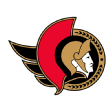
Key players added: F Michael Amadio, F David Perron, G Linus Ullmark
Key players lost: D Jakob Chychrun, G Joonas Korpisalo
Remaining cap space: $1.91 million
Coach status: Travis Green is getting his second shot as a (permanent) NHL head coach. Ottawa is banking on Green having learned from that past experience — in both Vancouver and during his stint as interim bench boss in New Jersey — to make the Senators into a true postseason contender.
Green is a former player, and he’s a hungry young coach eager to prove himself after a short stint with the Canucks ended poorly. Ottawa needs stability at the coaching position after churning through DJ Smith and Jacques Martin over the last two years.
Overall grade: B. Ottawa pulled off two significant (and much-needed) trades: first, flipping underperforming Korpisalo to Boston for Ullmark, and then sending Chychrun to Washington. The defenseman declined during his time in Canada’s capital, and both sides were in line to benefit from a fresh start.
The Senators also got Shane Pinto to sign a two-year extension, preventing further distraction after last season’s suspension. And adding a veteran like Perron is a solid depth move.
In theory, Ottawa should see better results than they did last season given the changes (particularly in net). If nothing the Senators’ new management group did was particularly wow-worthy, they accomplished what was necessary. Given Ottawa’s stable of talent already in the fold — from Brady Tkachuk to Tim Stutzle — that was prudent business by the Senators.

Key players added: D Josh Mahura, D Brandon Montour, F Chandler Stephenson
Key players lost: F Pierre-Edouard Bellemare, G Chris Driedger, D Brian Dumoulin, D Justin Schultz
Remaining cap space: $7.26 million
Coach status: One of the reasons why the Kraken hired Dan Bylsma to replace Dave Hakstol was continuity. They looked at what Bylsma did with their AHL affiliate, taking them to consecutive Calder Cup Finals while developing players such as Ryker Evans and Tye Kartye — with the reality that more young players could be coming.
If Bylsma, who previously coached the Penguins and Sabres, can replicate that AHL success in his first season, it could see the Kraken challenge for a playoff spot after missing the postseason in 2023-24.
Overall grade: B. They needed a top-six center. So they got Stephenson. They needed another top-four defenseman with puck-moving presence. So they got Montour. Those are only two signings, but the Kraken did meet their needs while having the leftover cap space to sign 2023 Calder Trophy winner Matty Beniers to an extension.
There are questions about whether Montour and Stephenson can replicate the success they had elsewhere with a team that is counting on them to play bigger roles, but the Kraken did check off those two boxes.
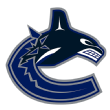
Key players added: F Jake DeBrusk, D Vincent Desharnais, D Derek Forbort, F Danton Heinen
Key players lost: D Ian Cole, G Casey DeSmith, F Elias Lindholm, D Nikita Zadorov
Remaining cap space: $1.02 million
Coach status: Rick Tocchet’s first full season with the Canucks saw them emerge as arguably the NHL’s biggest surprise. They parlayed that regular-season success into being a win away from the Western Conference finals.
Now they must answer one significant question: Is what they did the new normal? And if so, how far can the Canucks take their newfound success in what became an even more challenging Western Conference landscape?
Overall grade: B. Canucks GM Patrik Allvin was faced with trying to enhance a division champion roster with limited cap space. It’s why they lost players such as Lindholm and Zadorov, but used that money to get players who could possibly impact their entire lineup.
DeBrusk gives them another 20-goal scorer, while Heinen gives them someone who has reached double-digit goals four times. It’s the sort of secondary scoring that should help the Canucks if they’re in another tight playoff series.
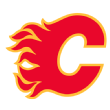
Key players added: D Jake Bean, G Devin Cooley, F Ryan Lomberg, F Anthony Mantha
Key players lost: F A.J. Greer, D Oliver Kylington, G Jacob Markstrom
Remaining cap space: $20.82 million
Coach status: It appears the goal for the Flames in Ryan Huska’s second season is to find the consistency that eluded them throughout the 2023-24 season.
They finished 17 points out of the final Western Conference wild-card spot, but there’s a chance they could have narrowed that gap and been closer if not for certain stumbling blocks. Like their six-game losing streak in late October and early November. Or the six additional losing streaks of more than three games, which included a five-game losing streak in March.
Overall grade: B-. Flames GM Craig Conroy used something of a risk-reward approach in free agency, which is fitting because the same point could be applied to his team’s roster.
If they can hit on Bean and Mantha, those additions could prove useful. Either they help the Flames challenge for a playoff spot, or they could be moved at the trade deadline. Mantha is a perfect rental — on a one-year deal — while Bean, who signed a two-year contract, has a manageable $1.25 million cap hit.
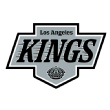
Key players added: D Kyle Burroughs, D Joel Edmundson, F Warren Foegele, F Tanner Jeannot, D Caleb Jones, G Darcy Kuemper
Key players lost: F Viktor Arvidsson, F Pierre-Luc Dubois, F Carl Grundstrom, F Blake Lizotte, D Matt Roy
Remaining cap space: $9.16 million
Coach status: Fair or unfair, there are two objectives present in Jim Hiller’s first full season with the Kings. The first is to make the playoffs in an increasingly competitive Western Conference. The second is for the Kings to win a first-round series.
Getting beyond the first round hasn’t happened in more than a decade. Each passing season that ends in the first round creates more questions about where this franchise is heading.
Overall grade: B-. Needs were met and voids were addressed. But, it must lead to the Kings advancing to the second round. That’s not the ultimate goal, but it would provide a benchmark compared to what they’ve gone through the last three postseasons.
And if they fail to get out of the first round or even miss the playoffs altogether? It will lead to more questions about the franchise’s future, and if they need to go in another direction by moving on from GM Rob Blake.
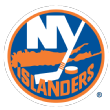
Key players added: F Anthony Duclair
Key players lost: D Sebastian Aho
Remaining cap space: $1.08 million
Coach status: Patrick Roy was a surprising in-season replacement for Lane Lambert, who successfully guided the Islanders to a playoff berth. That was about all GM Lou Lamoriello could have asked for from Roy, who hadn’t coached in the NHL since vacating his post with Colorado in 2016.
Lamoriello was adamant at season’s end that he and Roy would work together to build New York’s roster from here, and that sort of collaborative effort should help the coach feel more secure going into next season, with his fingerprints on the Islanders’ roster too.
Overall grade: B-. It’s a rarity for Lamoriello to hand out long-term deals to free agents. But the Isles GM did just that with a four-year pact going to Duclair. Consider that signing to be Lamoriello putting his money where his mouth is. Roy wanted Duclair because of their history from when Roy coached Duclair with the QMJHL’s Quebec Remparts. And as Duclair put it, when a coach calls and says they want you, it’s tough to turn down.
Duclair was terrific with Tampa Bay (eight goals and 15 points in 17 games) following a trade from San Jose. Adding the veteran winger is a sneaky good move, and makes New York better in an area where they have been perennial underachievers.

C GRADES

Key players added: F Vladimir Tarasenko, G Jack Campbell, G Cam Talbot
Key players lost: F David Perron, D Jake Walman, G James Reimer
Remaining cap space: $19.92 million
Coach status: Derek Lalonde is going into his third season with Detroit — and his seat is undeniably warm. When GM Steve Yzerman tapped Lalonde for his first NHL head coaching job, it was with the idea that he could help Detroit break through its defensive issues and become a playoff-caliber team.
Despite Lalonde’s best efforts, the Red Wings haven’t turned the corner on that side of the puck — something Yzerman made clear when he said Detroit basically lacked the basic fundamentals of defending. Lalonde must be feeling the heat now as Yzerman has made it clear the status quo — no playoff appearances since 2016 — won’t be accepted from here.
Overall grade: C+. If Yzerman can be critical of how the Red Wings are performing on the ice, it’s worth discussing how they’ve been constructed, too. Yzerman didn’t go all-in anywhere to make Detroit demonstrably better. His notable moves were re-signing Patrick Kane to a one-year contract and adding free agent Tarasenko on two-year pact. Veterans with Stanley Cup-winning experience are generally good to have, but how much of a difference will they make overall?
Granted, Yzerman has RFAs Lucas Raymond and Moritz Seider to sign, and that requires cap space. But he is counting on the Red Wings’ internal growth to carry the day here, and how beneficial that strategy is will become clear in due time. Until then it doesn’t appear Detroit is much improved — or all that different — from what Lalonde was working with last season. Hence why the coach and his staff will be tasked with getting Detroit to lose its Achilles heel as an underperforming defensive team.
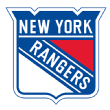
Key players added: F Sam Carrick, F Reilly Smith
Key players lost: F Barclay Goodrow, F Alex Wennberg
Remaining cap space: $8.1 million
Coach status: Peter Laviolette guided New York to a Presidents’ Trophy-winning regular season and an Eastern Conference finals berth in his first season. That’s a solid start to the coaching tenure — and a strong foundation on which to build.
The veteran did take some heat for how he handled certain personnel — namely Matt Rempe, Kaapo Kakko and Alexis Lafreniere — in the postseason. But Laviolette shouldn’t have anything to worry about in his own job security as New York prepares to try and repeat last season’s success.
Overall grade: C+. The Rangers’ offseason feels far from complete, given what New York hasn’t accomplished yet. GM Chris Drury began his tinkering early when he put Goodrow on waivers so that San Jose — who’s trade interest in Goodrow was vetoed by the player — could claim him. Drury also looked to trade Jacob Trouba, but the defenseman’s 15-team no-trade list has made that difficult.
Frankly, the Rangers just haven’t done a whole lot to improve, especially after letting Wennberg — a fine third-line center — walk in free agency. Smith could slip into the team’s top-nine rotation. Carrick is Goodrow’s heir apparent at fourth-line center. All fine — but will it move the needle for New York next season? Drury does have to be mindful of cap constraints with Igor Shesterkin due up for an expensive long-term extension. That could still be coming down the pipe.

Key players added: D Brian Dumoulin, F Robby Fabbri, F Jansen Harkins
Key players lost: F Max Jones, F Jakob Silfverberg
Remaining cap space: $22.64 million
Coach status: Greg Cronin enters his second season behind the Ducks’ bench with a lot of questions before him:
Overall grade: C. Free agency was complex for the Ducks. They entered as one of the top three teams in terms of cap space, but that didn’t mean they needed to use it.
It’s just that when they did, they were strategic. Trading for Dumoulin and Fabbri gave them a pair of pending UFAs; they now have five players on expiring contracts who could be moved at the deadline. Knowing those players could be moved for draft capital allows the Ducks to concentrate on a future that already has 12 players younger than 25 years old under contract.
But again, it’s a little puzzling that they didn’t use some of that cap space to make more veteran additions to help that emerging young group perform a bit better in the short term.

Key players added: F Sam Lafferty, F Beck Malenstyn, F Jason Zucker, G James Reimer
Key players lost: F Zemgus Girgensons, F Victor Olofsson, F Jeff Skinner
Remaining cap space: $14.55 million
Coach status: Lindy Ruff is back behind the bench in Buffalo to replace the fired Don Granato. It’s Ruff’s second go-around with the Sabres after he coached there from 1997-2013, taking Buffalo to the playoffs nine times in that 14-year stretch.
Given the Sabres remain in the longest postseason drought in pro sports since he left, it might not be a coincidence GM Kevyn Adams brought him back into the fold. Buffalo is desperate to be a playoff contender again, and Ruff could have the secret recipe to get them back in the mix.
Overall grade: C. Buffalo hasn’t done anything to make its top-six better. In fact, the Sabres arguably got worse by buying out Skinner. Even if Skinner had a down year production-wise and questionable defensive habits, he was a superior option to the the other additions Adams has made to help bolster the Sabres up front.
Zucker and Lafferty are fine depth signings, no doubt. Malenstyn should contribute in the bottom six. But Adams offered up a second round pick to Washington for him, after Malenstyn’s (career-high) 21-point 2023-24?
It’s difficult to gauge if Buffalo is truly improved now, or just counting on its well-paid core to be more of what they showed in 2022-23 than in 2023-24. Ruff obviously had a say in how the Sabres have conducted themselves too. Perhaps the Sabres aren’t done tinkering this summer.
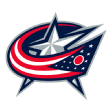
Key players added: F Sean Monahan
Key players lost: D Jake Bean, D Adam Boqvist
Remaining cap space: $18.07 million
Coach status: Columbus is the only NHL team without a head coach. The Blue Jackets had replaced Mike Babcock — before he coached a game for them — last September with Pascal Vincent, and then incoming GM Don Waddell fired Vincent in June after his lone season behind the bench.
Sources have confirmed Columbus’ interest in Todd McLellan for the vacant post, and a veteran coach would be best for the Blue Jackets as they try (again) to get the franchise on track.
Overall grade: C. There’s not much to say about what Columbus did — and didn’t do — in their offseason thus far. Waddell made it clear the Blue Jackets wouldn’t make splashy signings in free agency (that strategy hasn’t worked terribly well for Columbus in the past, either) and true to his word, Waddell has been fairly quiet. A Patrik Laine trade didn’t materialize at the draft or the early part of the summer, either.
Monahan is a decent addition for Columbus, on a young team that could use some consistent veteran contributors. He’s also familiar with Blue Jackets star Johnny Gaudreau from the nine seasons they spent together in Calgary (which could explain the rich five-year contract). Monahan helping to ignite Gaudreau’s game would be a serious bonus for the Blue Jackets, who are still waiting for the best out of the player they planned to build a contender around.
Otherwise, Columbus is clearly counting on growth from within to win the day.

Key players added: F Yakov Trenin
Key players lost: D Alex Goligoski, D Dakota Mermis
Remaining cap space: $1.53 million
Coach status: Wild as it sounds, John Hynes was hired in November and he already has been in his job longer than 12 other NHL coaches. That speaks to the volatility of being an NHL coach.
Injuries and inconsistencies played a major role in why the Wild were 11 points short of the final Western Conference wild-card spot. For Hynes and the Wild, the objective is to avoid the injury problems they faced last season, with the belief it could see them remain in the hunt for a playoff spot much longer next spring.
Overall grade: C. Once again, the combined $14.743 million in dead cap space from the Zach Parise and Ryan Suter buyouts limited the Wild this offseason. That figure will reduce to a combined $1.66 million next offseason, with the promise that Wild GM Bill Guerin can finally have the flexibility to address his roster in the fullest way possible.
But he did make an effort to add wherever possible. That meant looking to add goalscorers who were in their price range. That saw them add Trenin, who went from $1.7 million annually to $3.5 million annually, to provide secondary offense for a team that was 21st in goals last season.
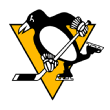
Key players added: F Anthony Beauvillier, F Kevin Hayes, D Sebastian Aho, D Matt Grzelcyk
Key players lost: F Reilly Smith
Remaining cap space: $3.52 million
Coach status: Mike Sullivan has helped bring two Stanley Cups to Pittsburgh, and those stats on a resume provide any coach with a longer than normal leash. But it’s hard not to wonder about Sullivan’s future with the Penguins.
Pittsburgh missed the playoffs entirely in back-to-back seasons, and GM Kyle Dubas fired assistant coach Todd Reirden in May despite his close ties to Sullivan. Was that an indication the walls may be closing in on Sullivan too? If historical success is a factor, then Sullivan might have a decent runway left to get Pittsburgh back off the ground. How well the Penguins fare in the first half of the coming season could spell trouble for his future though.
Overall grade: C. Pittsburgh was supposed to be getting younger. Instead, Dubas has targeted a handful of veterans to go along with the Penguins other … veterans.
Beauvillier and Hayes combined for 16 goals last season with their former clubs. That’s not much production to be injecting up front. Grzelcyk was a healthy scratch for Boston down the stretch in the regular season and into the postseason, too. What sort of renaissance can Pittsburgh expect from him now? At least Aho could be a true contributor on the back end in a potent third-pairing spot.
The Penguins haven’t found that winger to pair with Sidney Crosby, though (and granted that won’t be easy given the caliber of player it would take to keep up with Pittsburgh’s captain). What the Penguins have done to date feels more like a team leaning towards rebuilding than retooling for a push back into the playoffs. But Dubas & Co. have time left to prove that’s not the case.

Key players added: F Alexander Holtz, F Victor Olofsson, G Ilya Samsonov
Key players lost: F Michael Amadio, F William Carrier, F Anthony Mantha, F Jonathan Marchessault, D Alec Martinez, G Logan Thompson
Remaining cap space: -$3.64 million
Coach status: Bruce Cassidy won the Stanley Cup in his first season with the Golden Knights, and then lost in the first round the next spring. Even with such contrasting playoff fates, Cassidy is still one of the NHL’s premier head coaches. He puts his team in a position to have one of the strongest chances of winning a Stanley Cup. That includes this year’s Golden Knights, as they seek to win a second title in three years with the belief Cassidy’s tactics could see them achieve their ultimate goal again.
Overall grade: C. There’s no ignoring the fact that the Golden Knights lost all of their UFAs to other teams. There’s no denying that the years of being aggressive has led to them facing a cap crunch, further underscoring the need to get players signed on team-friendly contracts.
But let’s also be real here. Golden Knights GM Kelly McCrimmon is hockey’s version of a mad scientist in that he’ll concoct a trade scenario that will see his team land some big name while somehow simultaneously solving the Golden Knights’ cap problems. While that’s not to say McCrimmon will always be in a position to make those moves, there’s always the possibility. That reality alone is what allows the Golden Knights to stay in title contention.
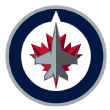
Key players added: F Jaret Anderson-Dolan, G Eric Comrie, D Haydn Fleury, G Kaapo Kahkonen, D Colin Miller, F Mason Shaw
Key players lost: G Laurent Brossoit, D Brenden Dillon, F Sean Monahan, F Tyler Toffoli
Remaining cap space: $5.8 million
Coach status: Elevating associate coach Scott Arniel to head coach following Rick Bowness’ retirement means the Jets are getting someone who knows their personnel well, along with their aims for 2024-25. And that’s not just getting the Jets back to the playoffs, but winning a first-round series for the first time since the 2020-21 season.
Overall grade: C. Navigating around the combined $5.466 million in dead cap space from the Nate Schmidt and Blake Wheeler buyouts was always going to be a challenge. Another was knowing they had to get deals done for RFAs such as Cole Perfetti.
This is why the Jets were forced to see quite a few players leave in free agency and be meticulous about how they added. They filled in some areas, but weren’t able to spend big. That said, they still have the bulk of a roster in place that made the playoffs, so we can’t punish them too badly.
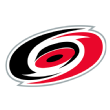
Key players added: F Jack Roslovic, D Shayne Gostisbehere, D Sean Walker
Key players lost: F Jake Guentzel, F Stefan Noesen, F Teuvo Teravainen, D Brett Pesce, D Brady Skjei
Remaining cap space: $11.68 million
Coach status: Rod Brind’Amour and his entire coaching staff just received multi-year extensions in May. Brind’Amour has a .664 points percentage in the regular season (and .514 in the playoffs) with the Hurricanes, and suffice to say Carolina’s been pleased overall with what Brind’Amour has brought to the organization.
Overall grade: C-. The Hurricanes’ early offseason returns have been discouraging to say the least. Carolina let Pesce and Skjei move on to other teams in free agency, and replaced them with an aging Walker and Gostisbehere. That’s an undeniable step back for Carolina’s back end — and given how much weight the Hurricanes put in their defensive game, downgrading there is less than ideal.
Carolina stood pat with their goaltending too, while failing to chase down any of the top netminders available in trade who could have provided insurance behind Frederik Andersen (and his injury history).
The biggest sting might have been losing Guentzel, who Carolina went all-in to acquire at the trade deadline with the hope he’d be a long-term piece in their offense. But hey, the Hurricanes got a third-round pick from Tampa Bay for Guentzel’s signing rights, and that’s about the best move they’ve made all spring.
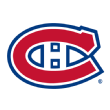
Key players added: None
Key players lost: None
Remaining cap space: $10.21 million
Coach status: Martin St. Louis has been with the Canadiens since 2022. While it might seem Montreal hasn’t made much progress under his leadership, the Canadiens have continued to steadily evolve through their young core. And St. Louis has navigated his own growing pains as a coach, too.
GM Kent Hughes is committed to a low-and-slow rebuild, and St. Louis has been the right coach to guide the group in place. All that said, Montreal should be taking a significant step forward this season because of that core development. St. Louis must make the most of Montreal’s roster.
Overall grade: C-. Montreal’s big move of the offseason so far was signing Juraj Slafkovsky to an eight-year extension. That’s a superb move for the player and organization to have their recent No. 1 overall pick locked up long term.
But outside of securing Slafkovsky, the Canadiens didn’t do much in terms of improving from the outside. Hughes made comments about the difficulty of luring free agents to Montreal when teams based in tax-free states, for example, present more desirable landing spots. That could be true in theory, but other Canadian clubs still managed to add players. A fringe signing — no disrespect, Alex Barre-Boulet — won’t make Montreal an immediate contender in the Atlantic Division. And eventually, that’s where they need to get.
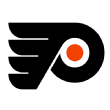
Key players added: None
Key players lost: F Cam Atkinson
Remaining cap space: -$830,000
Coach status: John Tortorella has multiple years left on his deal, and no desire to close his chapter early in Philadelphia. The Flyers, it seems, feel the same. Tortorella may not have taken Philadelphia back to the playoffs since being hired in 2022, but the Flyers were tantalizingly close to earning a berth last season before a late collapse put that possibility out of reach.
Tortorella’s effect on the Flyers’ young players and their development is what management has appreciated most about him, and that’s where he should continue having the biggest impact for Philadelphia into next season and beyond.
Overall grade: C-. The Flyers haven’t signed any outside free agents. GM Danny Briere hasn’t executed any trades. Philadelphia’s only notable transactions have been signing 2023 No. 7 overall pick Matvei Michkov to a three-year, entry-level contract, and re-signing Erik Johnson, Garnet Hathaway and Egor Zamula to new deals.
Now, it’s worth stressing that Michkov coming to North America from Russia and potentially entering Philadelphia’s lineup this season is important for the Flyers. Taking Michkov that high in the draft was a gamble, and the Flyers are looking to prove it’s one that can pay off in the short and long term. Briere didn’t rule out other potential moves this summer for Philadelphia. But if this is it, that’s an underwhelming offseason haul for the Flyers.
